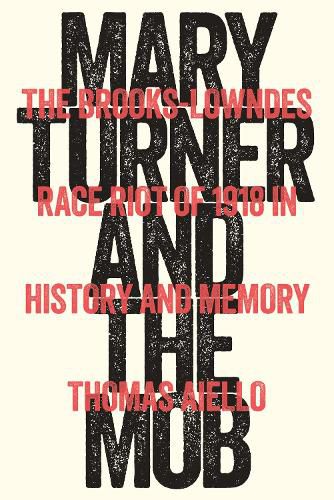Readings Newsletter
Become a Readings Member to make your shopping experience even easier.
Sign in or sign up for free!
You’re not far away from qualifying for FREE standard shipping within Australia
You’ve qualified for FREE standard shipping within Australia
The cart is loading…






A reinterpretation of one of America's most notorious lynchings The 1918 lynching of Mary Turner by a white mob in Brooks County, Georgia, is remembered and studied mainly because of the horror of an allegedly pregnant woman's murder. In Mary and the Mob, author Thomas Aiello asserts that the gruesome details of Turner's execution have distracted historians from investigating the larger context of these terrible events. Turner was murdered but not pregnant, the author contends, and Walter White, the NAACP investigator in the case, knew this but obscured the facts because of the story's effectiveness. Aiello approaches Turner's murder and broader Brooks County violence not only as a series of rural South lynchings but also as events more accurately characterized as race rioting, fitting just inside the broader Red Summer wave starting with East St. Louis in 1917 and continuing until Tulsa in 1921. Mary and the Mob challenges readers to ask the critical questions necessary to understand why South Georgia was an especially violent place in the early 20th century.
$9.00 standard shipping within Australia
FREE standard shipping within Australia for orders over $100.00
Express & International shipping calculated at checkout
A reinterpretation of one of America's most notorious lynchings The 1918 lynching of Mary Turner by a white mob in Brooks County, Georgia, is remembered and studied mainly because of the horror of an allegedly pregnant woman's murder. In Mary and the Mob, author Thomas Aiello asserts that the gruesome details of Turner's execution have distracted historians from investigating the larger context of these terrible events. Turner was murdered but not pregnant, the author contends, and Walter White, the NAACP investigator in the case, knew this but obscured the facts because of the story's effectiveness. Aiello approaches Turner's murder and broader Brooks County violence not only as a series of rural South lynchings but also as events more accurately characterized as race rioting, fitting just inside the broader Red Summer wave starting with East St. Louis in 1917 and continuing until Tulsa in 1921. Mary and the Mob challenges readers to ask the critical questions necessary to understand why South Georgia was an especially violent place in the early 20th century.